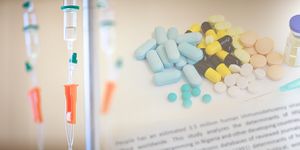Smart Wristband Monitors Health

Engineers at Rutgers University-New Brunswick have recently developed a wireless connection wristband for smartphone compatibility that can monitor health. The wristband which is made out of plastic material and includes a biosensor and a flexible circuit board, has an integrated circuit to process electrical signals. It also includes a micro-controller for digitizing data and a Bluetooth module for wireless data transmission.
The technology which can be added to watches and other wearable devices can monitor heart rate and physical activity according to the study that was recently published in Microsystems & Nanoengineering. "It's like a Fitbit but has a biosensor that can count particles, so that includes blood cells, bacteria and organic or inorganic particles in the air," explains Mehdi Javanmard, the senior author of the study and assistant professor in the Department of Electrical and Computer Engineering in the School of Engineering. The development of the wristband will inspire a new personal health and environmental monitoring devices. "Current wearables can measure only a handful of physical parameters such as heart rate and exercise activity," says Abbas Furniturewalla, the study’s lead author and former undergraduate researcher in the Department of Electrical and Computer Engineering. "The ability for a wearable device to monitor the counts of different cells in our bloodstream would take personal health monitoring to the next level."

Health care providers can get quick blood test results from patients using these wristbands and without the need for expensive lab equipment. "There's a whole range of diseases where blood cell counts are very important," says Javanmard. "Abnormally high or low white blood cell counts are indicators of certain cancers like leukemia, for example." Additionally, next-generation wristbands can be revolutionary if utilized for multiple biomedical and environmental applications. Continuous health monitoring can allow patients to send results to physicians remotely. "This would be really important for settings with lots of air pollutants and people want to measure the amount of tiny particles or dust they're exposed to day in and day out," Javanmard said. "Miners, for example, could sample the environment they're in."
Source: Rutgers University








